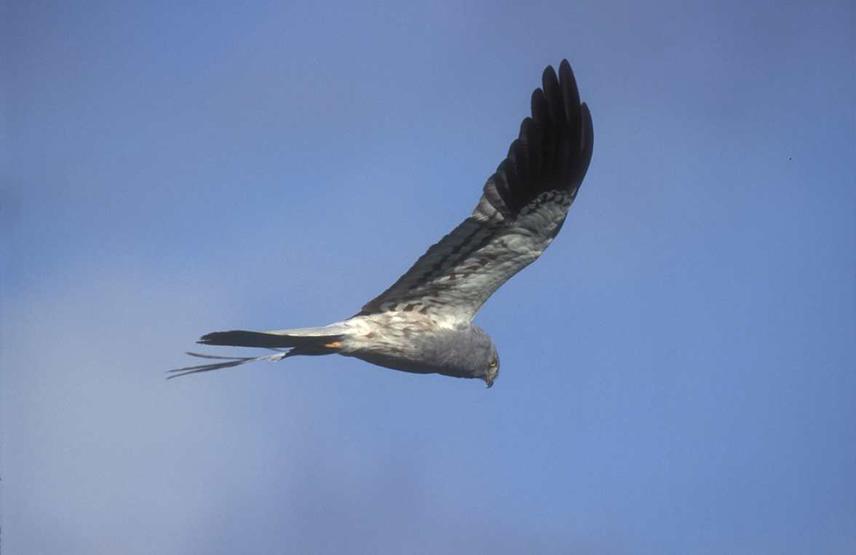Ashok Verma
Other projects
23 Jan 2014
Population and Distribution of Harriers (Genus Circus) in the Arid and Semi-Arid Environments of Rajasthan and Gujarat in North-Western India
With very little information available on the ecological requirement of harriers in the Thar Desert of Rajasthan, India, the present study aims to obtain information on their communal roost sites, foraging habitats, population and distribution.

Male Montagu’s harrier in flight. © F. Cahez.
Harriers are the Pale-arctic migrants to India. Of 6 harrier species in India, 4 are known to occur during winter in the Thar Desert of Rajasthan. These are Eurasian Marsh Circus aeruginosus, the Hen C. cyaneus, the Montagu’s C. pygargus and the Pallid C. macrourus harriers. Of these, the pallid harrier is classified as ' Near Threatened' at global level. Harriers are known to spend more time on their winter grounds for preparing themselves for breeding hence it becomes more important to gather information on their status which will be central to their conservation. The Thar Desert holds vast patches of grasslands and scrublands, the habitats suitable for harriers. However, these are not yet explored for harriers. The grasslands which are also known to be one of the most threatened ecosystems in India are fast disappearing due to heavy pressures from human developmental activities and the spread of exotic species, over grazing, grass-cutting, conversion of grasslands for agriculture and plantation etc. It becomes even more important to study harriers as these roost communally on the ground in rank vegetations mainly grasslands.
Besides collecting information on the population and distribution of harriers the present study attempts an investigation into locating their stopovers, communal roost-sites, and foraging habitats which will be prerequisite for their long term conservation in the region. Any data collected during the present study on the Pallid harrier which is considered a rare, highly dispersed and poorly studied at global level will be very useful for its management in the Thar Desert. Harrier surveys will be carried out in their potential habitats mainly in Jaisalmer, Jodhpur, Barmer, Bikaner and Churu districts. Pellets will also be collected from the communal roosts to document their winter food preferences.
Workshops will be organized for local communities and students on the identification skills of harriers, and harriers’ role as top predators and bio-indicators of plains will make them aware of the importance of these important groups of birds and will indirectly help conserve harriers in the region.